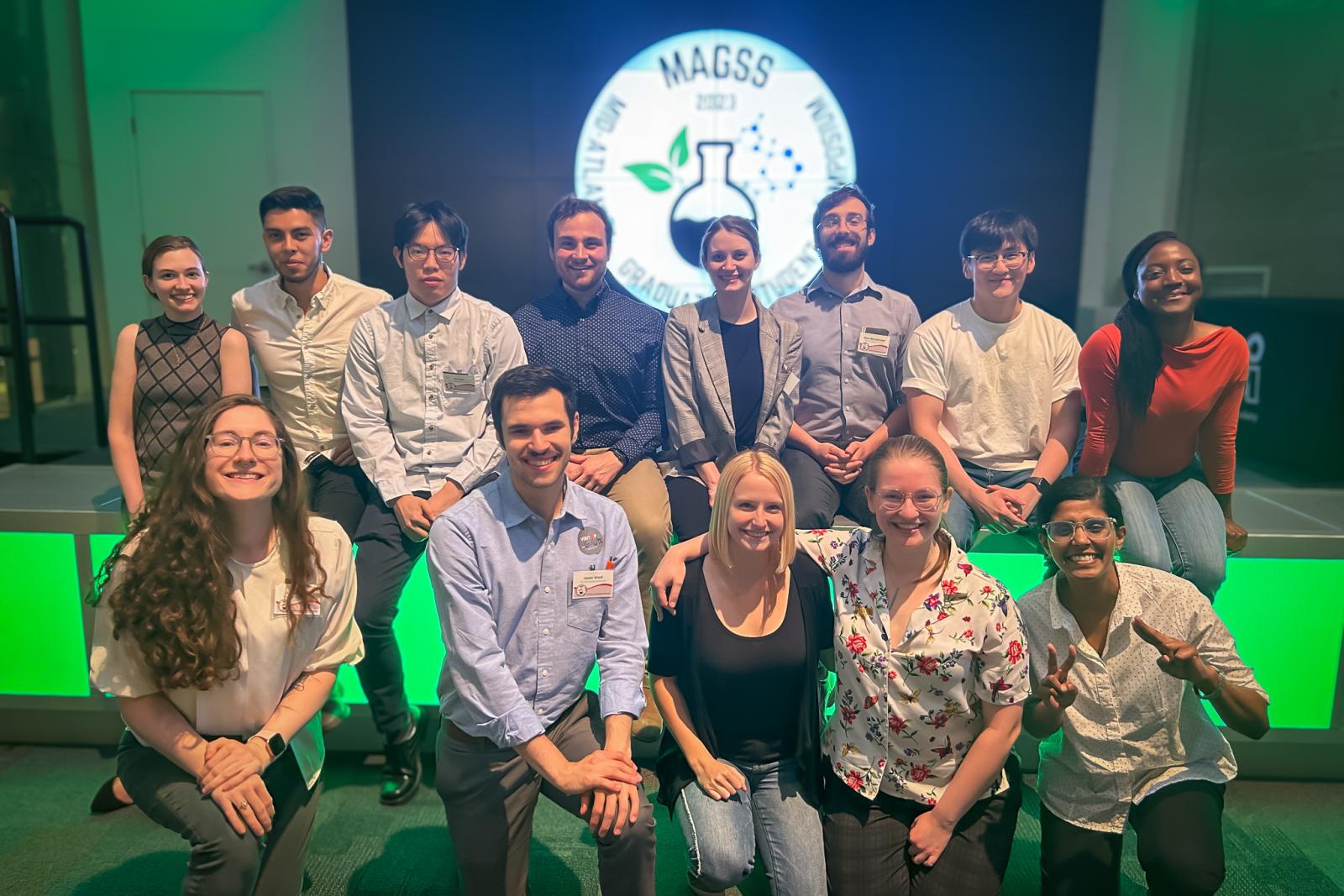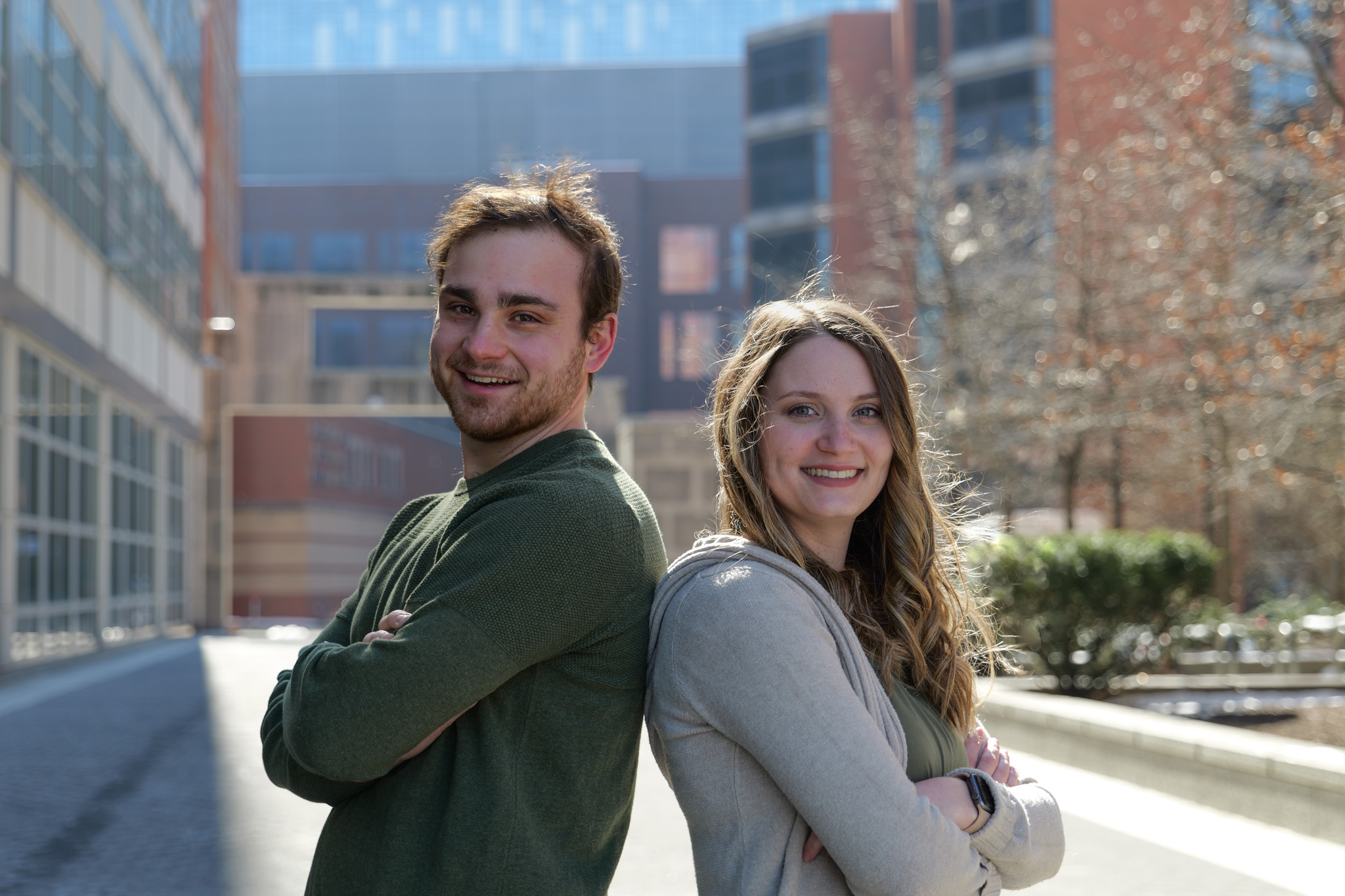Graduate Students lead effort to revive Midwestern conference

The Mid-Atlantic Graduate Student Symposium (MAGSS) was established in 1968 to bring together student scientists studying medicinal chemistry and pharmaceutical sciences from across the Midwest for an annual research-packed weekend.
The hosting baton was passed between attendees from The Ohio State University, University of Toledo, West Virginia University, Purdue University, Duquesne University and Wayne State University. But after 2014’s conference at the University of Toledo, the symposium went dormant.
"Students lost an accessible space to connect with their colleagues and grow,” said Karl Werbovetz, PhD, professor of medicinal chemistry and pharmacognosy at the Ohio State College of Pharmacy and a MAGSS alumnus. “The distance between the universities’ students grew as they saw each other less and less.”
But in June 2023, students and faculty in the Ohio State College of Pharmacy’s Department of Medicinal Chemistry and Pharmacognosy performed an act of resurrection.
During his time at the University of Kansas (KU), Blake Peterson, PhD, professor and chair of Ohio State’s Division of Medicinal Chemistry and Pharmacognosy, supported another graduate symposium, Medicinal Chemistry Meeting-in Miniature (MIKIW). MIKIW connected students from Minnesota, KU, Iowa and University of Illinois Chicago and paralleled the foundations of MAGSS.
“It was a great experience for the students at KU,” Dr. Peterson noted. “I wanted our students at Ohio State to have a similar opportunity for collaborative professional growth.”
Dr. Peterson enlisted the help of MAGSS alumni Dr. Werbovetz and Tom Li, PhD, associate professor of medicinal chemistry and pharmacognosy at Ohio State, to relaunch the symposium as a space for students to develop research presentation skills and network with peers.
Seeing a growth opportunity for their students, Drs. Li and Werbovetz put out a call for student leaders. Their call was answered by two students in the Fuchs Lab.
How to plan a conference from scratch

Fourth-year graduate students, Jeff Lockwood and Katie Starr demonstrate just how well opposites can work together.
The two volunteered to serve as the 2023 MAGSS student chairs, taking on the responsibility of organizing and hosting the conference.
Lockwood defines himself as a product-focused, type B. When asked what piece of lab equipment he most identifies with, he replied after intense reflection,
Meanwhile, Starr acknowledged her tendency to keep things in rigorous order. Looking back on their work with MAGSS, her personal highlight was the rush of crossing items off her to-do list during the big weekend.
“As the advisor, it was interesting to see them grow,” Dr. Li recalled. “At our first meeting, they sat quietly but all of a sudden they were driving the conference and taking charge.”
Once Starr and Lockwood received their MAGSS orientation from veteran attendees Drs. Li and Werbovetz, they started to build a team of fellow organizers.
The planning committee for MAGSS is traditionally made up of two student chairs from the hosting university and one or two students from each guest university to help shoulder the weight. The supporting students assist with planning areas that they found most interesting like marketing, finance or social events.
“We wouldn’t have been able to do it without the rest of the planners, and it was so great to learn leadership skills from individuals at our same level,” Lockwood said. “It can be a very distinct power difference when we’re leading undergraduates in the lab or being taught by faculty. Here, we had a lot of room to delegate respectfully and truly grow as a team.”
Planning groups didn’t just lean upon one another to schedule venues and find the funding for the event. They also operated as a sounding board, gathering and vetting each other’s ideas.
“Since we were organizing alongside our peers, we could gather input at every turn,” Starr said. “The event engagement was higher simply because we could ask attendees, ‘What do you want to see?’ as we went.”
Crowdsourcing feedback influenced the final program to include two keynote speakers, a vendor session, a career panel, poster and oral presentations, and a group reception at COSI. Informally, the committees launched a trivia night to break the ice and allow students to really get to know one another.
“The trivia event was simple and got everyone to know each other better,” Dr. Werbovetz recalled. “It’s nice to see the same connections between schools evolving from how they were when Tom and I attended as students.”

Measuring success
Although the planning committee was confident that their program offerings would be well met by the interests of attendees, doubts of sufficient research participation remained in the back of their minds.
One of the core components to MAGSS and any medicinal chemistry conference is the presentation of research. After an eight-year hiatus, the chairs worried that abstract submissions would be low, particularly for oral presentations.
In the end, the conference hosted 11 oral presentations and 34 research posters, completely filling the conference space.
“Most of those presenting were at least in the third year of their program,” Starr said. “It showed us that our schools had given their graduate students space to present and grow their experience. MAGSS was a great way to extend that experience to a larger audience.”
Part of Starr and Lockwood’s motivation in reviving MAGSS was how it might benefit their younger peers, and they were inspired by the readiness with which senior students took up the responsibility of presenting.
“The graduate-focused space of MAGSS allows us to build ongoing relationships with the students, PIs and labs from the universities that attend,” Lockwood said. “For Katie and me to have set up the symposium to offer a space for younger students to progress and find their path for the future means so much to us.”
The conference pulled in about 100 attendees, meeting the planning party’s goal.
Faculty members from Ohio State were joined by 15 faculty members from the visiting institutions during the conference. To support student growth, they provided feedback and mentorship to those in attendance. Many faculty also stepped in as judges for the poster presentations.
“It was so nice to see most of our division’s faculty, supporters from other divisions and external faculty members who wanted to help their students make the most of this experience,” Lockwood said.
Relieved of their duties, Lockwood and Starr continue to offer support to the students of Duquesne organizing the next conference. Once a month, they step away from their research on the sixth floor of Riffe Building, hop on a Zoom call with their Pennsylvania colleagues and dream up opportunities for MAGSS 2024.
“Not only were we the chairs of the symposium, but we were creating the vision,” Lockwood said. “Katie and I wanted the conference to succeed so that attending students would engage with the opportunity and give it the momentum to carry on for years to come.”